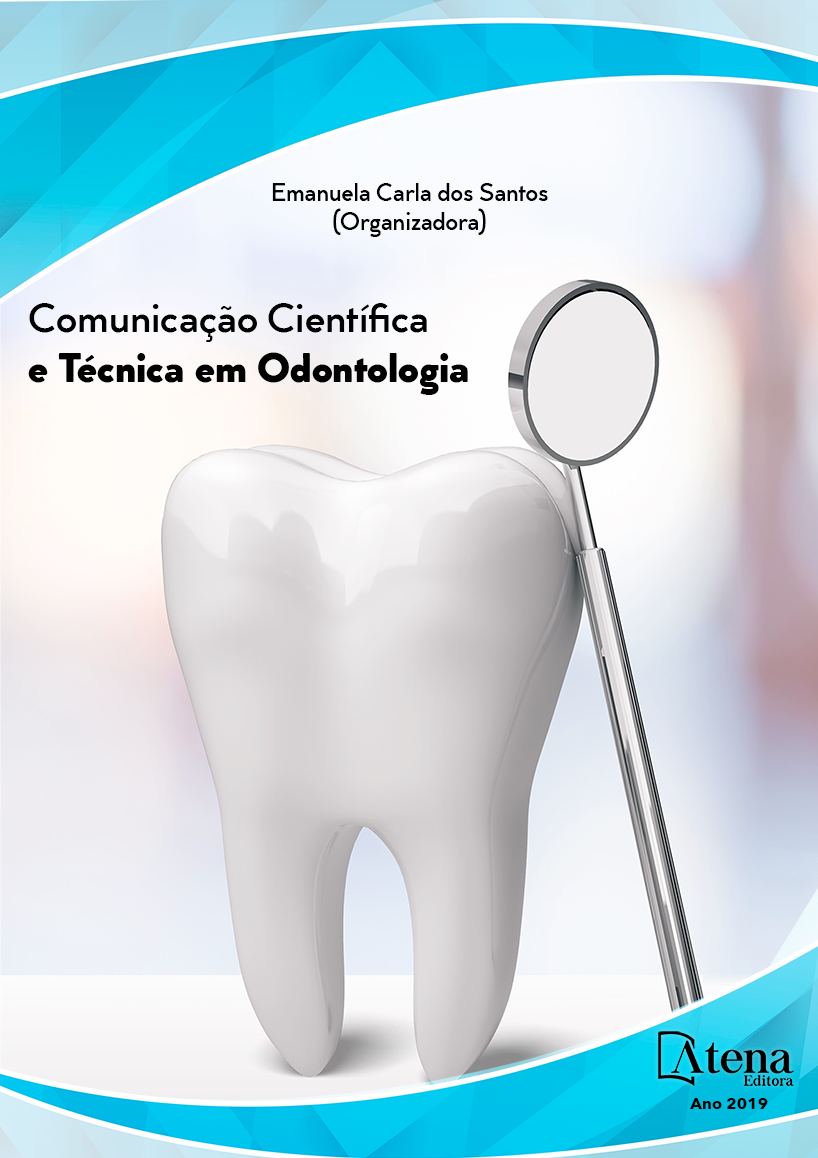
ANÁLISE DAS CONDIÇÕES BUCAIS, PARÂMETROS SALIVARES, DIETA E HIGIENE ORAL QUANTO AO RISCO DE CÁRIE E EROSÃO DENTAL EM PACIENTES OBESOS INDICADOS PARA CIRURGIA BARIÁTRICA
Indivíduos obesos têm risco
aumentado de desenvolver problemas
bucais como a cárie dental e erosão dental,
principalmente devido aos hábitos alimentares,
higiene bucal e alterações salivares pelo
uso de medicamentos. O objetivo desta
pesquisa foi analisar as condições bucais, os
parâmetros salivares, hábitos alimentares e
higiene oral quanto ao risco de cárie e erosão
dental em pacientes obesos indicados para
cirurgia bariátrica. Este estudo observacional
e transversal foi realizado com 26 pacientes
(n=26), com obesidade mórbida e/ou
complicações decorrentes da mesma, atendidos
em um hospital público da cidade de Maceió- AL.
Foram aplicados os índices: CPOD, BEWE e
IPV, bem como uma entrevista estruturada para
a análise de risco para cárie e erosão dental.
Fluxo salivar estimulado e capacidade tampão
dos pacientes também foram realizados. Os
resultados mostraram um CPOD de 21,23±6,94,
prevalência de erosão de 6,35±2,65, 34% das
superfícies dentárias com biofilme visível, fluxo
salivar de 0,87mL/min±0,59, capacidade tampão
de 4,64±1,05. O baixo fluxo salivar proporcionou
maior CPOD (Teste t Student, p=0,02), maior
freqüência de escovação e menor consumo de
carboidratos proporcionaram menos biofilme
visível nas superfícies dentárias (p=0,0001;
p=0,02). Pode-se concluir que os pacientes
apresentaram alta prevalência de cárie, erosão
de severidade baixa, acúmulo de biofilme em
menos da metade das superfícies dentárias, hipossalivação e baixa capacidade
tampão. O fluxo salivar e a capacidade tampão observados podem ser considerados
os principais fatores de risco de cárie e erosão dental nos pacientes pesquisados.
ANÁLISE DAS CONDIÇÕES BUCAIS, PARÂMETROS SALIVARES, DIETA E HIGIENE ORAL QUANTO AO RISCO DE CÁRIE E EROSÃO DENTAL EM PACIENTES OBESOS INDICADOS PARA CIRURGIA BARIÁTRICA
-
DOI: 10.22533/at.ed.29619010414
-
Palavras-chave: Cirurgia Bariátrica. Erosão Dentária. Cárie Dentária. Obesidade.
-
Keywords: Bariatric Surgery. Dental Erosion. Dental Caries. Obesity.
-
Abstract:
The obese patients have a over risk to develop dental caries due the
excessive consumption of carbs, and lesions erosive, how result the consumption
of acids food, episodes reflux gastroesophageal and the eating disorders, and the,
decrease salivary flow caused of the use of drugs. Today the bariatric surgery is
the indicated procedure to obesity control. The purpose this research is to analysis
of parameters salivary, eating habits and hygiene oral caries risk and dental erosion
in obese patients indicated for bariatric surgery. The search is characterized how
observational and transverse was realized with 26 patients (n=26), with morbid obesity
and/or complications arising out of the same attended in the Hospital Professor Alberto
Antunes (HUPAA). Were to applied indices: DMFT, BEWE, UPI, as well as an interview
structured for risk analysis of risk factors for dental caries and erosion. Salivary flow
tests and buffering capacity of patients were also used. The results showed a DMFT of
21.23 ± 6.94, erosion prevalence of 6.35 ± 2.65, 34% of dental faces with visible biofilm,
salivary flow of 0.87mL/min ± 0.59, buffer capacity of 4, 64 ± 1.05. The low salivary
flow provided higher DMFT (Student’s t test, p = 0.02), higher brushing frequency and
lower carbohydrate intake provided less visible biofilm on dental surfaces (p = 0.0001;
p = 0.02).Can conclude that patients introduced caries prevalence high, low severity
erosion, accumulation of biofilm in less than 50% of dental surfaces, hipossalivation
and low buffering capacity. The salivary flow and the buffering capacity observed can
be considered the main caries risk factors and erosion in dental patients researched.
-
Número de páginas: 15
- LAIS BRANDÃO NOBRE
- ANA CLARA DE ALMEIDA SILVA
- BARBARA MARIA CAVALCANTE LÔBO
- GEISA GABRIELLA RODRIGUES DE OLIVEIRA
- EVANISA HELENA MAIO DE BRUM
- KRISTIANA CERQUEIRA MOUSINHO
- SYLVIA AMÉLIA VASCONCELOS DE ALBUQUERQUE
- NATANAEL BARBOSA DOS SANTOS
- Laís Renata Almeida Cezário Santos


